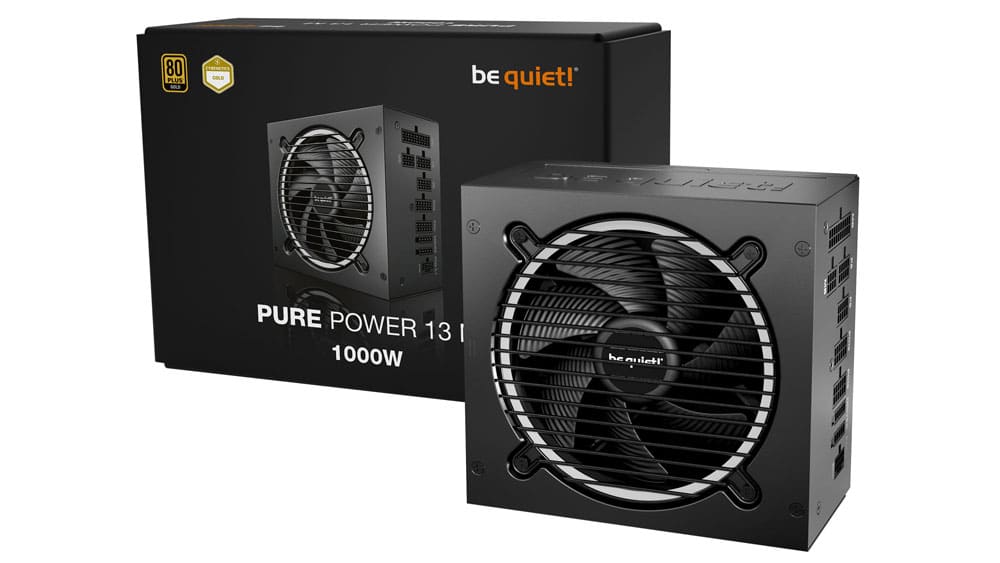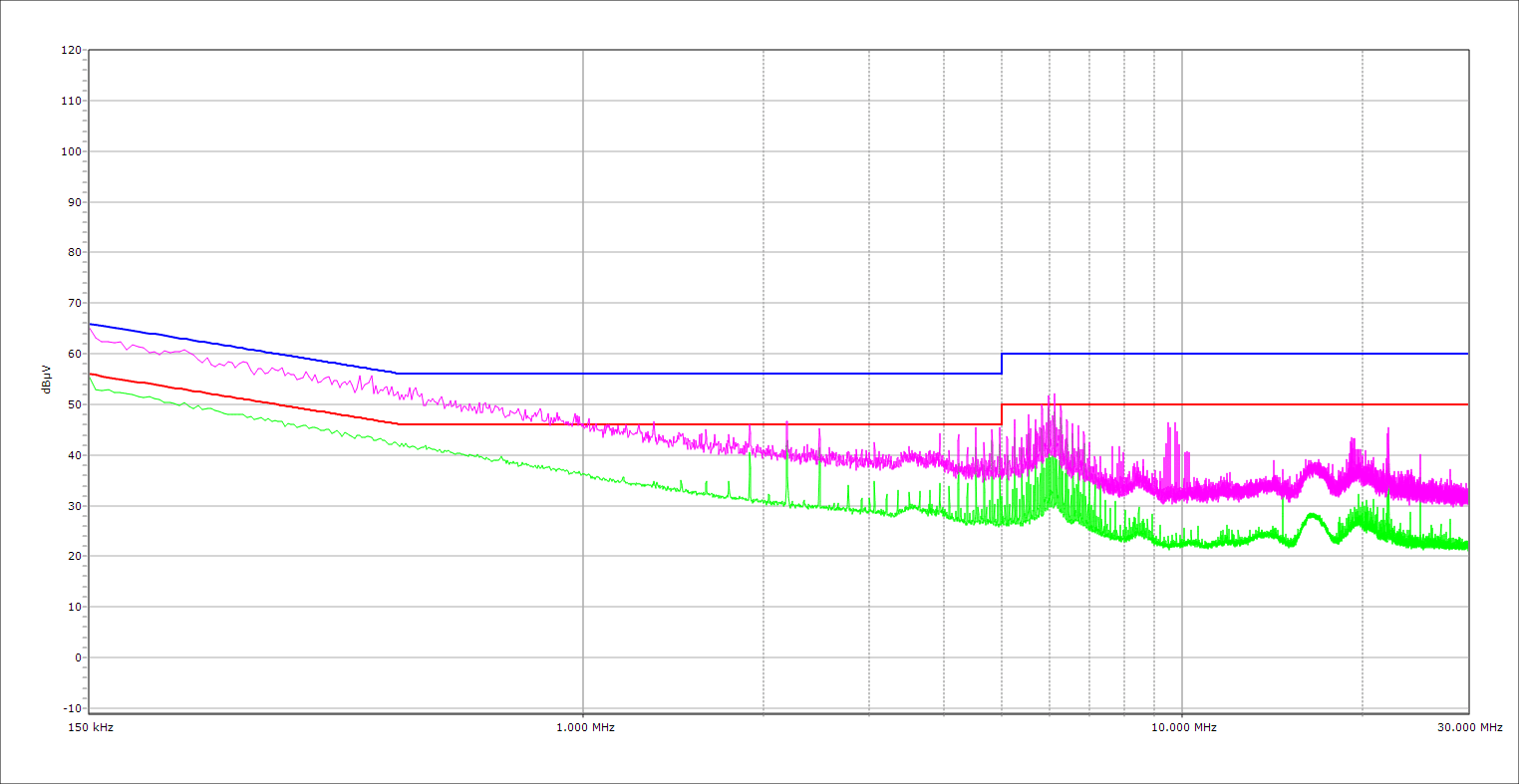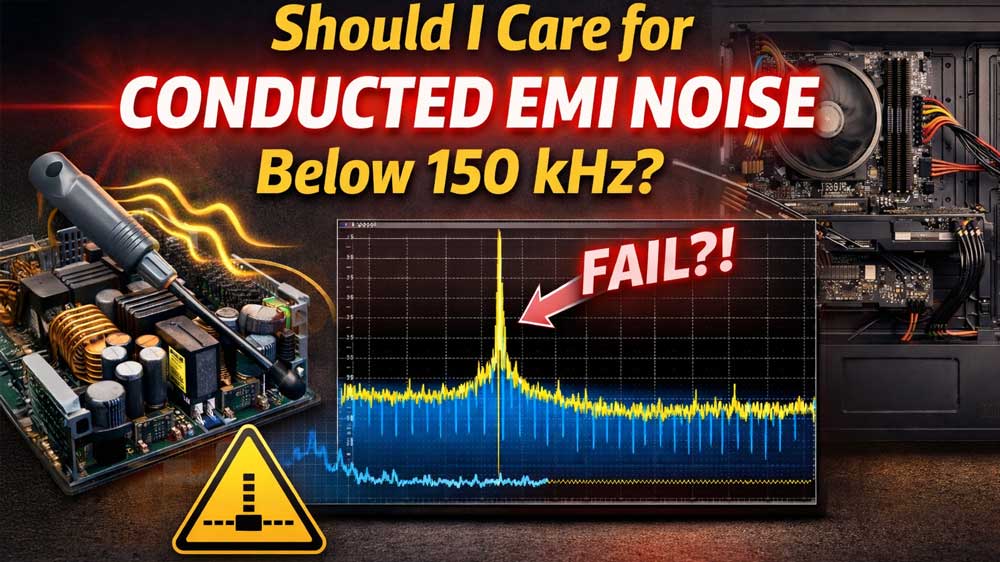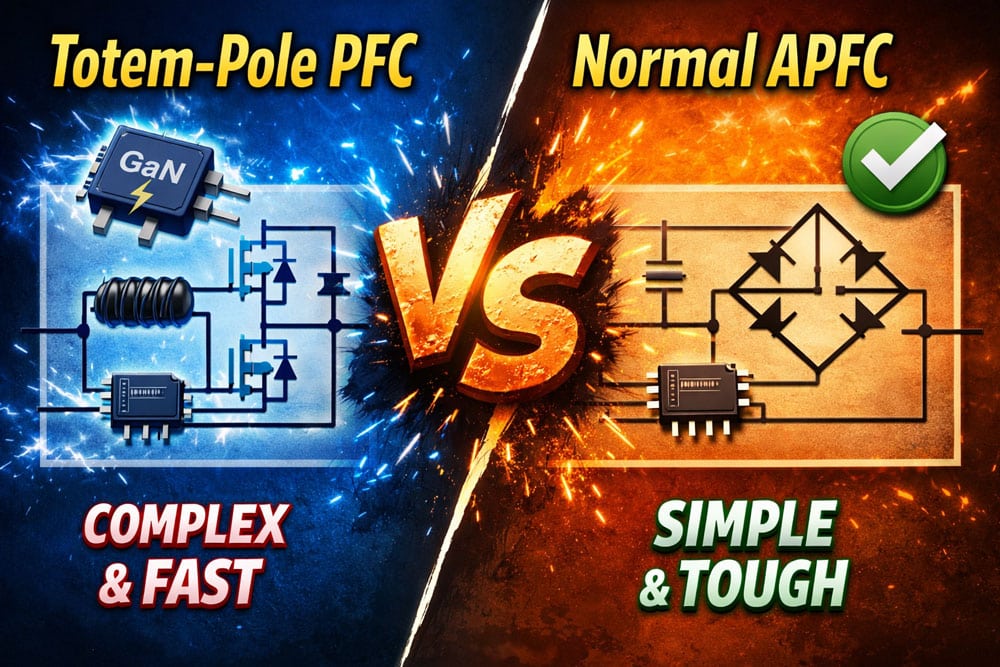Protection Features
| OCP (Normal @ 29.1°C) | 12V: 94.40A (113.19%), 11.982V 5V: 28.5A (129.55%), 5.09V 3.3V: 30.2A (137.27%), 3.352V 5VSB: 4.2A (140.00%), 5.038V |
| OCP (Hot @ 42.8°C) | 12V: 91.00A (109.11%), 11.992V 5V: 29.2A (132.73%), 5.089V 3.3V: 30.6A (139.09%), 3.347V 5VSB: 4.2A (140.00%), 5.038V |
| OPP (Normal @ 30.0°C) | 1146.92W (114.69%) |
| OPP (Hot @ 42.1°C) | 1116.97W (111.70%) |
| OTP | ✓ (100°C @ Heat Sink) |
| SCP | 12V to Earth: ✓ 5V to Earth: ✓ 3.3V to Earth: ✓ 5VSB to Earth: ✓ -12V to Earth: ✓ |
| PWR_OK | Proper Operation |
| NLO | ✓ |
| Fan Failure Protection | ✗ |
| Conducted Emissions EN55032 & CISPR 32 | ✗ |
| UVP (Full Load @ 90V) | ✓ |
| UVP (No Damage @ 80V) | ✓ |
| SIP | Surge: MOV Inrush: NTC & Bypass Relay |
The 12V rail’s OCP triggering points are conservatively set. This is beneficial, as we are discussing a 1000W PSU here; hence, there is no need to exceed the nominal specs significantly. The 5V rail doesn’t have highly set OCP triggering points, but its OCP is set higher at increased temperatures, which should be the opposite. At 3.3V, OCP is exceptionally high, and it is set higher under high temperatures than at normal temperatures. Manufacturers must understand that PSUs are stressed more when operating at high temperatures compared to lower temperatures.
The over power protection is set correctly, and the rest of the protection features are present, but fan failure protection, which should be standard on every modern PSU platform, is not.
EMC Pre-Compliance at a Glance
Every electronics device, including PSUs, can be an EMI source, which, depending on the amount of EMI emitted, can affect the proper operation of nearby devices. EMI can, in some extreme cases, even render them unusable. Some standards have been established to minimize electromagnetic interference (EMI) noise. The corresponding standards for IT (Information Technology) products are CISPR 32 and its derivative, EN 55032, which applies to products sold in the EU. In the EU, every product bearing the “CE” marking must comply with the EN 55032 standard. CISPR 32 and EN 55032 standards categorize devices into two classes: A and B. Class B equipment is intended for domestic environments. Hence, its permitted EMI emissions are significantly lower than those of A-class devices.
Our equipment for EMI readings:
- Rohde & Schwarz FPC1500 (loaded with all options)
- Tekbox TBLC08 LISN
- Tekbox TBFL1 transient limiter
- Tekbox EMCview software
| CISPR 32 / EN55032 Limits | ||
| CISRP 32 / EN 55032 Class A Conducted EMI Limit | ||
| Frequency of Emission (MHz) | Conducted Limit (dBuV) | |
| Quasi-peak | Average | |
| 0.15 – 0.50 | 79 | 66 |
| 0.50 – 30.0 | 73 | 60 |
| CISPR 32 / EN 55032 Class B Conducted EMI Limit | ||
| Frequency of Emission (MHz) | Conducted Limit (dBuV) | |
| Quasi-peak | Average | |
| 0.15 – 0.50 | 66 – 56 | 56 – 46 |
| 0.50 – 5.00 | 56 | 46 |
| 5.00 – 30.00 | 60 | 50 |
| CISRP 32 / EN 55032 Class A 10-Meter Radiated EMI Limit | ||
| Frequency of Emission (MHz) | Field Strength Limit (dBuV/m) | |
| 30 – 88 | 39 | |
| 88 – 216 | 43.5 | |
| 216 – 960 | 46.5 | |
| > 960 | 49.5 | |
| CISRP 32 / EN 55032 Class B 3-Meter Radiated EMI Limit | ||
| Frequency of Emission (MHz) | Field Strength Limit (dBuV/m) | |
| 30 – 88 | 40 | |
| 88 – 216 | 43.5 | |
| 216 – 960 | 46.0 | |
| > 960 | 54.0 | |
Please note that the ATX spec allows a 4 dB margin for conducted and radiated emissions. This means that if a PSU exceeds the limits but stays within the 4 dB margin, it meets the corresponding ATX spec requirement (8.1 Emissions).
EMI Results
The PSU’s conducted emissions are below the respective limits at both the average and peak EMI detectors.




Hi Aris,
Thank you so much for the thorough review
Would you kindly clarify why this 1000W unit didn’t get the recommended badge while the 850W did? I’ve seen other sections where you recommend this 1000W unit when asked about this particular capacity.
Also, I’d like your opinion on this unit vs the RMx at the same capacity. Right now, in my region, the price is +$40 for the RMx, which I don’t mind if you’d recommend paying the extra, but the in-cable caps make it a bit rough on the cable management.
Regards.
Hi!
It didn’t get a recommendation badge because of the not properly set OCP on the minor rails.
Both these units are performance leaders in this category. $40 are a lot, I would go to the be quiet! model which is very good, although the RMx line is among my favorites.
Can you connect this to a GPU with 3x 8 pin PCI-E?
Seems to lack one plug for that unless I’m missing something?
It has 4x 8 pin PCIe so yes
The PowerZone has relatively loud transformer noise, even in standby. You can hear it from the next room. Otherwise, it’s electrically quiet — no coil whine or other weird stuff — but the base hum is quite loud. What about this one?
Can you recommend a power supply that’s completely silent, even in standby? I’ve tested a few and ended up sticking with the PowerZone 2 because it’s a good all-rounder and gets a lot of things right. But that low hum or faint squeal drives me crazy. Every morning I wake up thinking, “Damn, I forgot to switch off the power strip again before going to bed
I have almost gotten Be Quiet Power Zone 2 750 W. I actually have it pending, right now I am considering Pure Power 13 M, as judging by tests it looks quite good.
I returned Thermaltake toughpower due to loud fans even at idle.
Right now I am running Corsair MN750X 750 W and I would appreciate quieter fans. But it is not bad. Also I had not experienced any coil whine, even when trying out uncapped games at up to 800 FPS. But my setup hardly needs 300 to 350 W at max, and does not really strain the PSU.
the Pure Power 13M line is really good. I would go with one of its members.